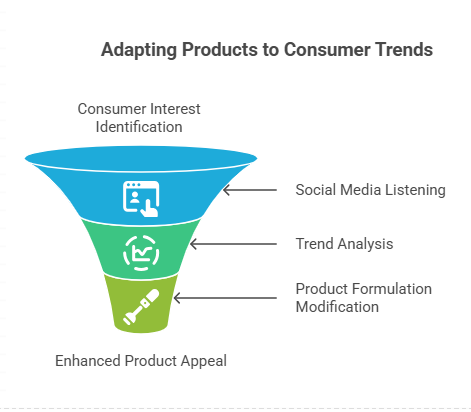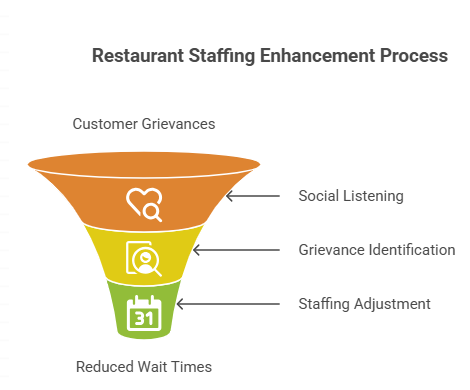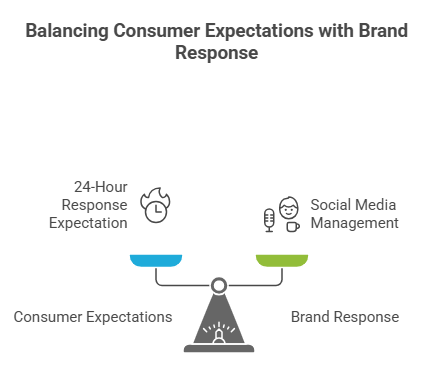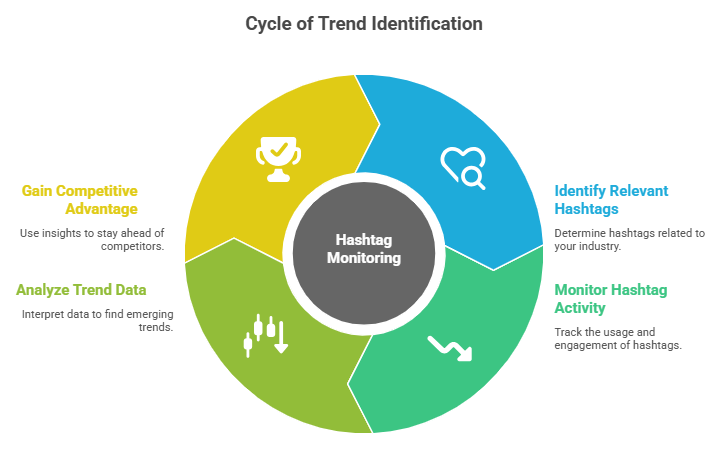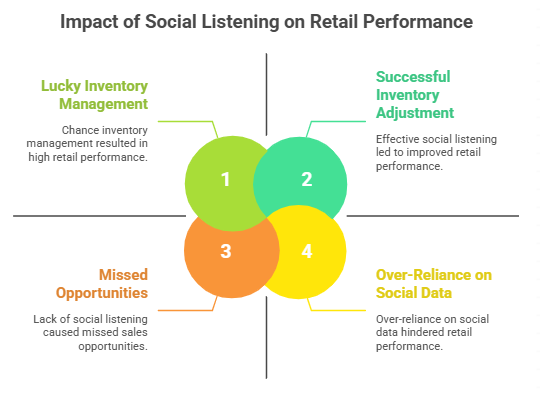What Is Social Listening?
Published September 5, 2025
Social listening often part of social media management is the process of tracking and analyzing online conversations to understand what people are saying about your brand, competitors, and industry.
Unlike simple monitoring, a social listening service digs deeper into data to uncover sentiment, trends, and actionable insights. Businesses use this to make smarter decisions, optimize campaigns, and enhance customer satisfaction.
Example 1: A skincare brand uses social media listening services to detect rising interest in “eco-friendly packaging” and adjusts its packaging strategy.
Example 2: A restaurant uses social listening to spot complaints about long wait times and improves staffing schedules.
In 2025, social listening is essential because it transforms raw data into actionable strategies.
Social Listening vs. Social Media Monitoring
Key Differences
| Aspect | Social Media Monitoring | Social Listening |
|---|
| Goal | Track mentions, comments, and engagement metrics | Understand sentiment, trends, and long-term patterns |
| Approach | Reactive — respond when tagged or mentioned | Proactive — predict issues and opportunities |
| Outcome | Alerts and surface-level reports | Strategic decisions based on deep analysis |
Many businesses start with monitoring as part of their social media management strategy, but investing in professional social listening services delivers deeper, long-term marketing value.
Why Social Listening Matters for Businesses in 2025
Social listening is no longer optional — it’s a competitive necessity. Here’s why:
- •
Spot trends before competitors: Early detection of consumer shifts lets you act fast.
- •
Protect brand reputation: Identify negative sentiment before it escalates.
- •
Improve customer experience: Address complaints proactively.
- •
Find influencers and partners: Discover brand advocates already speaking positively about you.
Insight: A 2024 Sprout Social study found that 65% of consumers expect brands to respond to social feedback within 24 hours — something strong social media management and listening make possible.
Ways Social Listening Enhances Customer Experience
Social listening improves customer experience by enabling faster responses, personalized engagement , and product improvements .With effective social media management and listening, businesses can:
- •
Proactive support: A travel company notices customers posting about flight delays and sends updates directly via social channels.
- •
Product upgrades: A software company spots recurring feedback about a missing feature and includes it in the next update.
- •
Loyalty building: A coffee shop responds to a happy customer's Instagram post with a free drink voucher, turning them into a brand advocate.
Example: A local café notices Instagram posts about their seasonal latte selling out. They use a social listening service to track demand and increase supply during peak hours.
By listening to your audience , you meet needs before customers even have to ask.
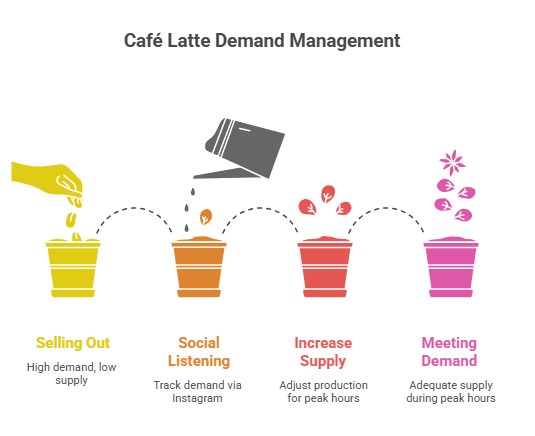
Step-by-Step
How to Implement Social Listening in Your Business
Implementing social listening in your business is not just about buying a tool — it’s about building a data-driven decision-making framework that links customer sentiment to business strategy. Here’s a detailed breakdown of how to go from zero to a fully functional social listening service inside your organization.
Step 1: Define Clear Objectives
Before tracking anything, decide what you want to achieve. Common objectives include:
- Reputation management: Monitor brand sentiment and address negative feedback.
- Competitive intelligence: See what’s being said about competitors and identify gaps.
- Campaign performance tracking: Measure how well marketing campaigns resonate.
- Product feedback collection: Identify new feature requests or product issues.
Pro Tip: Pro Tip: If your company already invests in social media management, integrate these objectives into your content calendar and customer engagement plans to keep actions consistent.
Step 2: Select the Right Tool or Service
Your choice depends on budget, scale, and desired features.
Options include:
- •
DIY Tools: Hootsuite, Sprout Social, Mention (affordable for small teams).
- •
Enterprise Suites: Brandwatch, Meltwater, Talkwalker (advanced analytics & AI).
- •
Managed Social Listening Services: Agencies offering full-service social media listening, from data collection to actionable insights.
Why it matters: Using professional social media listening services ensures you don’t just collect data, but interpret it correctly for strategic moves.
Step 3: Identify Keywords, Hashtags & Data Sources
You’ll need to track a mix of:
- •
Brand terms: Company name, product names, slogans.
- •
Competitor terms: Rival brands, competing product lines.
- •
Industry keywords: Niche topics, sector buzzwords.
- •
Hashtags: Trending and campaign-specific.
Don’t limit your sources to Facebook, Instagram, and X (Twitter). Include forums, review sites, YouTube comments, and even LinkedIn — especially for B2B social listening.
Step 4: Set Up Monitoring Dashboards & Alerts
- •
Real-time alerts: Get notified when sentiment spikes, either positively (viral praise) or negatively (potential PR crisis).
- •
Thematic dashboards: Organize insights into categories like "Customer Service," "Product Features," and "Competitor Mentions."
- •
Integration with CRM: Feed customer sentiment directly into sales and support workflows.
If your business already uses social media management tools, check if they have built-in listening modules to avoid paying for multiple platforms.
Step 5: Analyze Sentiment & Identify Trends
Sentiment analysis isn’t just about positive or negative — you should look for emerging patterns.
For example:
- Customers consistently mention slow shipping → operational improvement needed.
- A competitor’s new product gets mixed reviews → opportunity for targeted ads.
Tip: Pair qualitative insights (actual comments) with quantitative metrics (volume, reach, engagement rate) for a balanced perspective.
Step 6: Turn Insights Into Action
Data is only valuable if you act on it:
- Launch targeted ad campaigns based on trending topics.
- Improve product features customers frequently request.
- Address customer complaints before they escalate.
- Use social media management strategies to respond quickly and build trust.
Case Study: A retail brand spotted a spike in “out of stock” complaints via social listening. By adjusting inventory and announcing restocks on social channels, they recovered lost sales and improved customer sentiment.
Step 7: Review & Refine Regularly
Social listening is not a one-time project — it’s a continuous loop:
- Collect data.
- Analyze trends.
- Take action.
- Measure results.
- Adjust strategy.
Schedule quarterly deep-dive reviews to ensure your tracking keywords, sources, and campaign goals still align with market conditions.
Future Trends & Innovations in Social Listening
- AI-powered predictive sentiment analysis.
- Image and video logo detection.
- Voice-based listening for podcasts.
- Deeper integration between social media management and CRM tools.
When integrated into a social media management strategy, social listening becomes a competitive advantage. Whether you manage it in-house or hire a professional social listening service, the goal is to connect online conversations directly to business growth strategies.
 Social Media IntelligenceIncrease ROI by syncing offers with audience behavior trends
Social Media IntelligenceIncrease ROI by syncing offers with audience behavior trends
